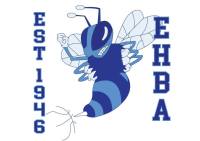Hamstring strain

Web Link http://hillsspinalsports.com.au
The hamstring refers to one of the tendons associated with the semitendinous, semimembranous and the biceps femoris muscles at the back of the knee. The hamstrings cross and act upon the hip and the knee. They play a critical role in daily activities such as running, walking, jumping and controlling some trunk movement. The function of the hamstrings is to extend the hip and flex (bend) the knee. A hamstring strain also called a pulled hamstring is common in sports that involve sprinting such as hurdle jumping, football and rugby.
Symptoms of a pulled hamstring are:
- A sudden sharp pain at the back of the leg, particularly during sprinting.
- Muscle spasm during stretching
- Swelling and bruising. If the strain is severe a gap may be felt in the muscle.
Hamstring strains are graded according to severity. Features of a grade 1 strain are:
- Tightness at the back of the thigh.
- Some discomfort with walking.
- Minimal swelling.
In a grade 2 strain:
- The person may limp.
- There may be sudden twinges of pain with activity.
- Swelling may occur.
- Bending the knee against resistance causes pain.
- The person may have difficulty straightening the knee.
- There is soreness in the area of the hamstring.
In a grade 3 strain:
- There is burning or stabbing pain.
- Walking is severely affected and crutches may be needed.
- Severe pain occurs when the knee is bent.
- Swelling occurs immediately.
After a few days with grade 2 or grade 3 injuries, there may be a large bruise below the tear caused by bleeding in the tissues. The first 48 hours following injury are critical. You should begin the RICE protocol immediately (rest, apply ice and compression and elevate the affected area). Rest is important to prevent further injury and give the muscle time to heal. A grade 1 strain should be rested for about 3 weeks, a grade 2 for four to six weeks while a grade 3 strain may take up to 3 months. Surgery is indicated for this type of strain. Ice should be applied for twenty minutes (never apply directly to the skin) every two hours while the leg is resting in an elevated position. A compression bandage helps reduce swelling and bleeding in the tissues.
Early stretching exercises should performed within the pain-free range to aid in decreasing swelling. We will use massage techniques to increase blood flow to the area and speed recovery, as well as ultrasound and electric stimulation to provide deep heat and relax the muscles. If you need to wear crutches to take some of the strain off the hamstrings, we will train you in using these and get you started on a rehabilitation program that will help you prevent further injury.










